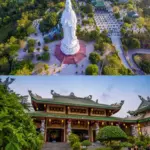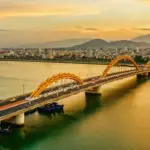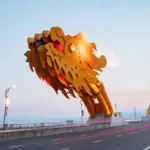Da Nang Travel Guide with Ovuigo: The Ultimate Local Experience
Top Attractions and Things to Do in Da Nang
Da Nang stands at the cultural and natural crossroads of Vietnam, blending rich history with modern attractions in the heart of Central Vietnam. Your first stop should be the iconic Dragon Bridge (Google Map), a dragon-shaped bridge spanning the Han River. Every weekend at 9 pm, watch as flames and water erupt from the dragon’s head — an unforgettable show, completely free of charge.
Just south lies the Marble Mountains (Google Map), a cluster of limestone and marble outcrops riddled with caves and pagodas. Entry: ~40,000 VND (adults), elevator extra. Wear sturdy shoes, follow posted signs, and climb the steps for stunning panoramas — go early to beat both the heat and the crowds.
For pristine sands and vibrant sunrise, My Khe Beach (Google Map) offers 9 km of scenic coastline. Surf, swim, or simply stroll at dusk, and enjoy facilities perfect for both families and couples.
Seeking an adventure above the clouds? Head west to Ba Na Hills (Google Map), home to the world-record Bana Hills cable car (5.8 km) and the surreal Golden Bridge (Google Map), held aloft by giant stone hands. Adult tickets: approx. 900,000–1,050,000 VND (including cable car, attractions, most games). Dress in layers — weather can shift by the hour.
Finally, immerse yourself in wilderness at the Son Tra Peninsula (Google Map). Rent a scooter or car, and wind through jungle roads with city and South China Sea views. See Linh Ung Pagoda and spot rare red-shanked douc langurs. Many trails are unpaved — keep safety first.
For a practical itinerary, combine morning at Marble Mountains, lunch at My Khe Beachside eateries, afternoon in Son Tra, and Dragon Bridge by night. For deeper historical exploration, don’t miss the Cham Museum or Han Market for authentic Da Nang experiences.
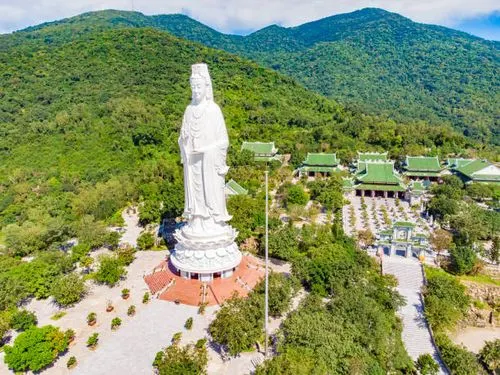
Best Time to Visit Da Nang and Climate Insights
Da Nang sits in a tropical monsoon climate zone, defined by two distinct seasons: dry (March to September) and wet (October to February). The best time to visit Da Nang is during the dry season. From April to August, expect clear skies, gentle seas, and perfect beach weather — ideal for sunbathing and outdoor activities such as water sports, hiking Marble Mountains, or even cable car rides to Ba Na Hills.
July and August are peak months for families and local tourists. If you prefer quieter travel and lower prices, consider March or September — the transition months, where rain is less common and temperatures are pleasant.
The rainy season runs from October through February. While some adventurous travelers relish misty hills, frequent downpours and rough seas can affect boat tours, outdoor sightseeing, and access to some peninsulas. Note: Around Tet (Vietnamese Lunar New Year, typically late January–early February), expect higher hotel and flight prices, but also a more festive city, with the Da Nang International Fireworks Festival lighting up the Han River.
Pro Tip: Check weather updates before planning day trips to nearby Hoi An, Hue, or My Son Sanctuary, especially during stormy months. Bring lightweight rain gear or pack sunscreen, depending on your travel window.

Where to Stay: Accommodation Guide in Da Nang
Da Nang’s accommodation scene has options with Ovuigo for every traveler and budget.
For luxury, the city’s famed beachfront resorts line My Khe and Non Nuoc Beaches (Google Map). Expect infinity pools, spa treatments, private beach access, and room rates starting from 2,000,000 VND/night. Resorts here are perfect for honeymooners, families seeking Da Nang family friendly activities, or anyone prioritizing direct beach access.
Those wanting proximity to nightlife, street food, and city views should choose hotels near Han River. Many are walking distance to Dragon Bridge, Han Market (Google Map), and Da Nang nightlife. Family-friendly chains and boutique hotels start around 600,000 VND/night.
Travelers on a budget can opt for hostels or guesthouses dotted throughout the city. These often feature group tours and social events, perfect for solo explorers. Rooms are available from 150,000 VND/night and up. Backpackers usually prefer the area around Non Nuoc Beach or city center for convenience.
Book early during major festivals, holidays, or when the Da Nang International Fireworks Festival is on. For direct Airbnb stays, consider properties in both the city and nearby Hoi An for extra flexibility.
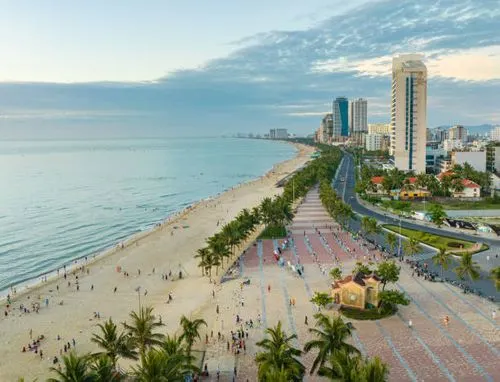
Cultural Experiences and Food Adventures in Da Nang
To truly experience Da Nang’s culture, start by visiting its lively local markets. Han Market (Google Map) is the city’s heart for food lovers and souvenir hunters. Wander aisles filled with spices, silk, and local handicrafts. Pick up dried seafood, traditional áo dài dresses, or street snacks such as bánh tráng cuốn thịt heo (rice paper rolls with pork).
After dark, explore the Da Nang night market at Helio Center or the riverside An Thuong zone. Savor Da Nang street food: mì Quảng (turmeric noodles), bún chả cá (fishcake noodle soup), and bánh xèo (crispy pancakes). Street eats range from 20,000 VND to 50,000 VND per dish, an unbeatable value for authentic flavors.
For unique activities, join Da Nang cultural tours that guide you through city history, Cham civilization, or even pottery workshops. Time your visit with local celebrations such as spring’s Fireworks Festival — a dazzling spectacle over the Han River.
Budget tip: Self-guided food adventures mean substantial savings and local insights. Just follow the crowds to the busiest stalls and don’t miss coffee-shop hopping along the Han River.
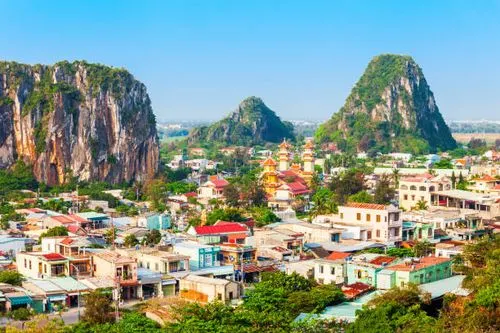
How to Get Around with Ovuigo: Accessibility and Travel Tips in Da Nang
Da Nang International Airport is the main gateway, only 3 km from city center — a quick 10–15 minute ride. Airport Transfers: Taxi (~100,000–150,000 VND), Grab, or pre-booked shuttle. Many hotels offer free or discounted Da Nang airport transfer services.
For getting around, taxis and ride-hailing apps (Grab, Be) are reliable and affordable. For full flexibility, rent a scooter (120,000–180,000 VND/day) or a car with a driver — ideal for families or group travel. Streets are wide and well-paved, but city traffic can spike at rush hour, so plan accordingly.
To explore beyond Da Nang, join a guided tour or ride local buses to Hoi An, Hue, or Quang Nam. Day-trippers should start early to maximize sightseeing time. The Bana Hills cable car is an experience in itself and the best way to the highland attractions.
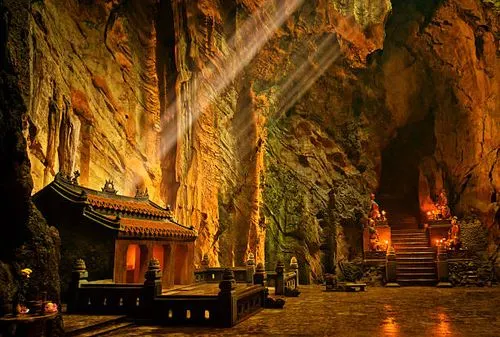
Day Trips and Nearby Destinations from Da Nang
Da Nang is the perfect hub for day trips to Central Vietnam’s greatest sites. Hoi An lies just 30 km south (40 minute drive by taxi or bus). Here, lantern-lit ancient streets, riverside cafes, and tailors await — plan for both daytime walks and evening photo opportunities.
To the north, historical Hue is 100 km away (2.5 hours by train or car). Visit the Imperial City, tombs, and pagodas — ideal for lovers of heritage and architecture.
Head inland to My Son Sanctuary, a UNESCO World Heritage site about 40 km southwest. Organized tours run daily, or go independently by taxi or motorbike. Expect a small entry fee — usually around 150,000 VND.
Nearby Quang Nam province and the South China Sea coast beckon with eco-tours, seafood feasts, and tranquil beaches. For each destination, check traffic, weather, and ticket prices in advance — and bring cash, as some local ticket booths don’t accept cards.
We don’t run tours — we craft experiences.
Each journey is a story written just for you,
designed for those who wish to explore Vietnam slowly, deeply, and meaningfully.
No fixed itineraries. No crowds.
Just you — and the moments that truly matter.
Ready for your personalized Da Nang travel experience? Contact us now at +84868319161 on WhatsApp or visit ovuigo for more travel inspiration!
Your slow and meaningful journey starts with a restful stay. Check out The Manor Hoi An, Hola 1, and Hola 2 for unique accommodation experiences in Central Vietnam.

